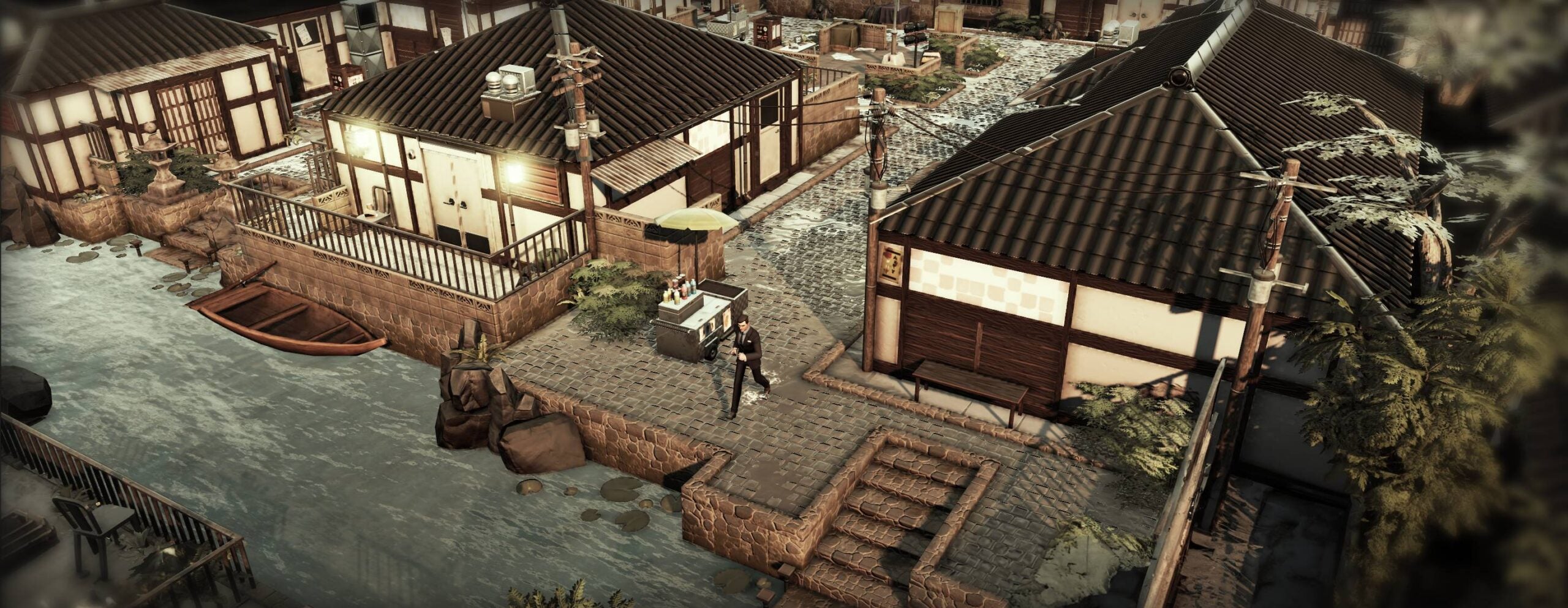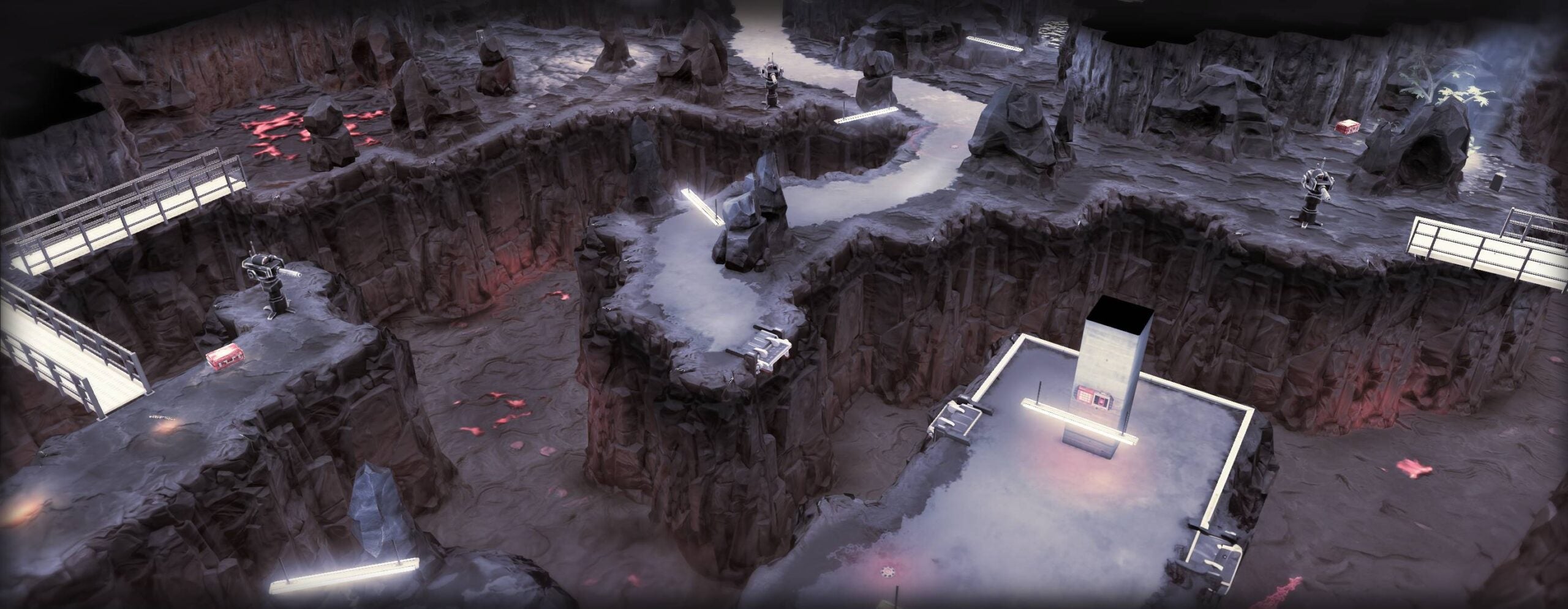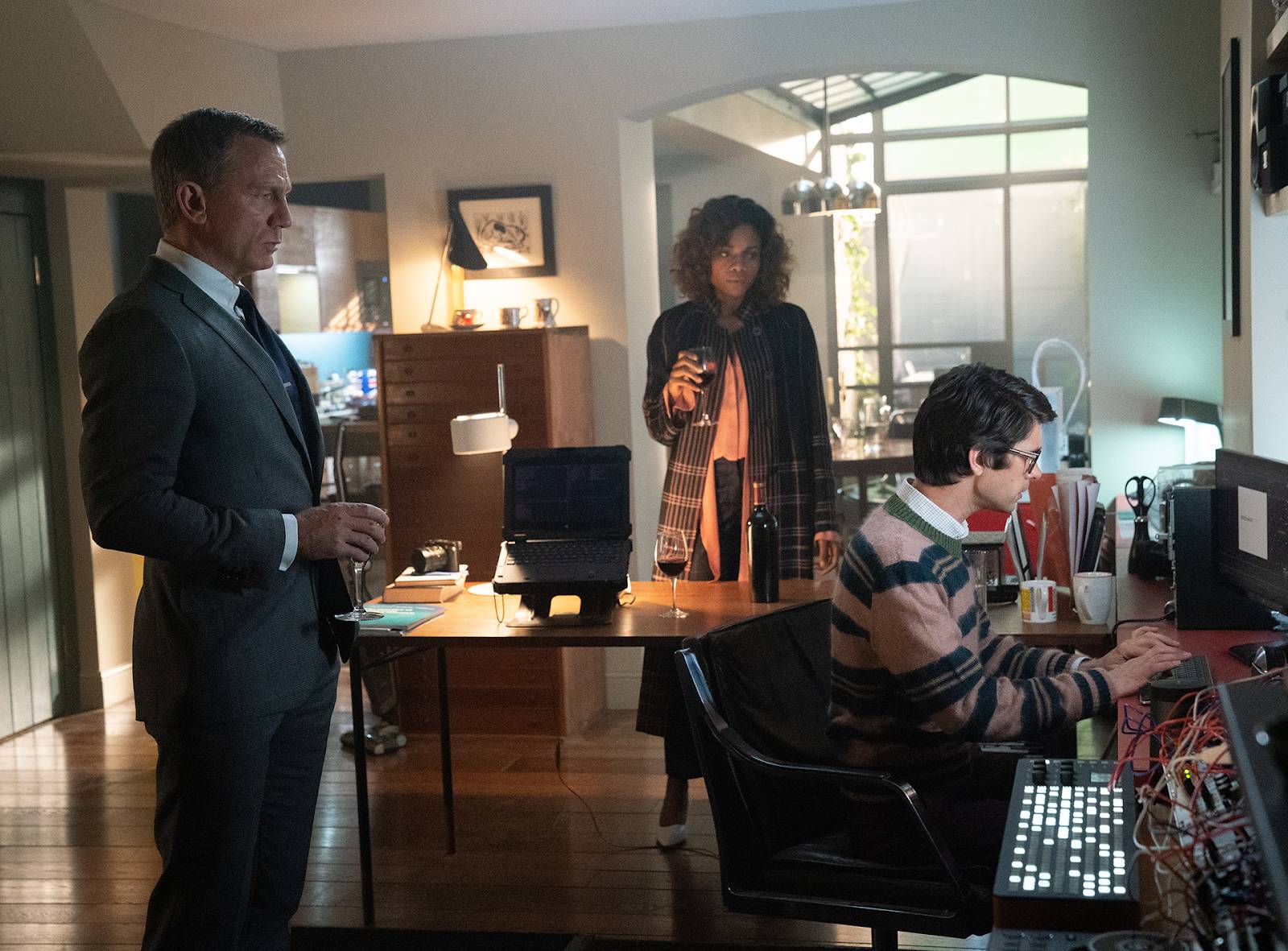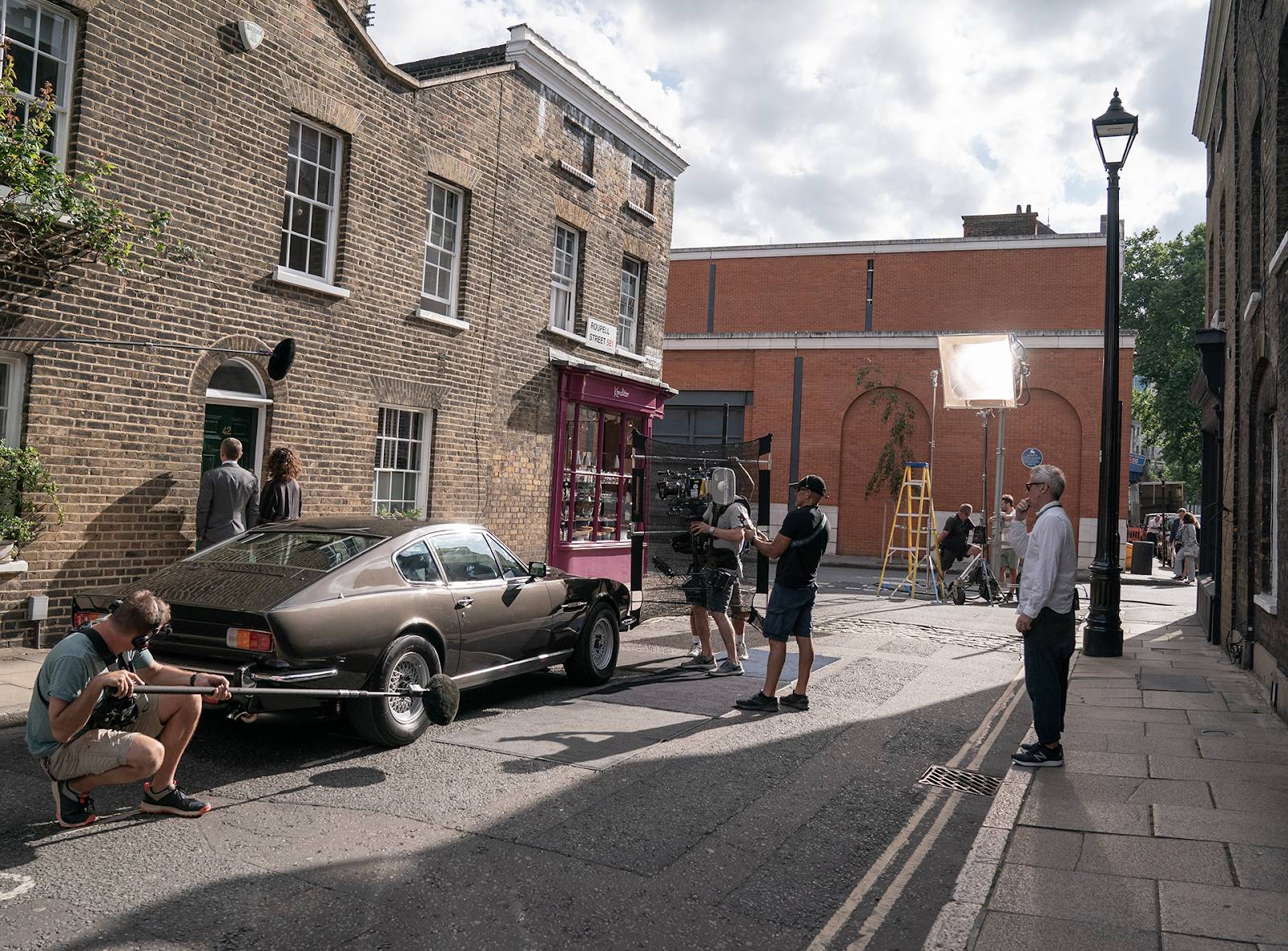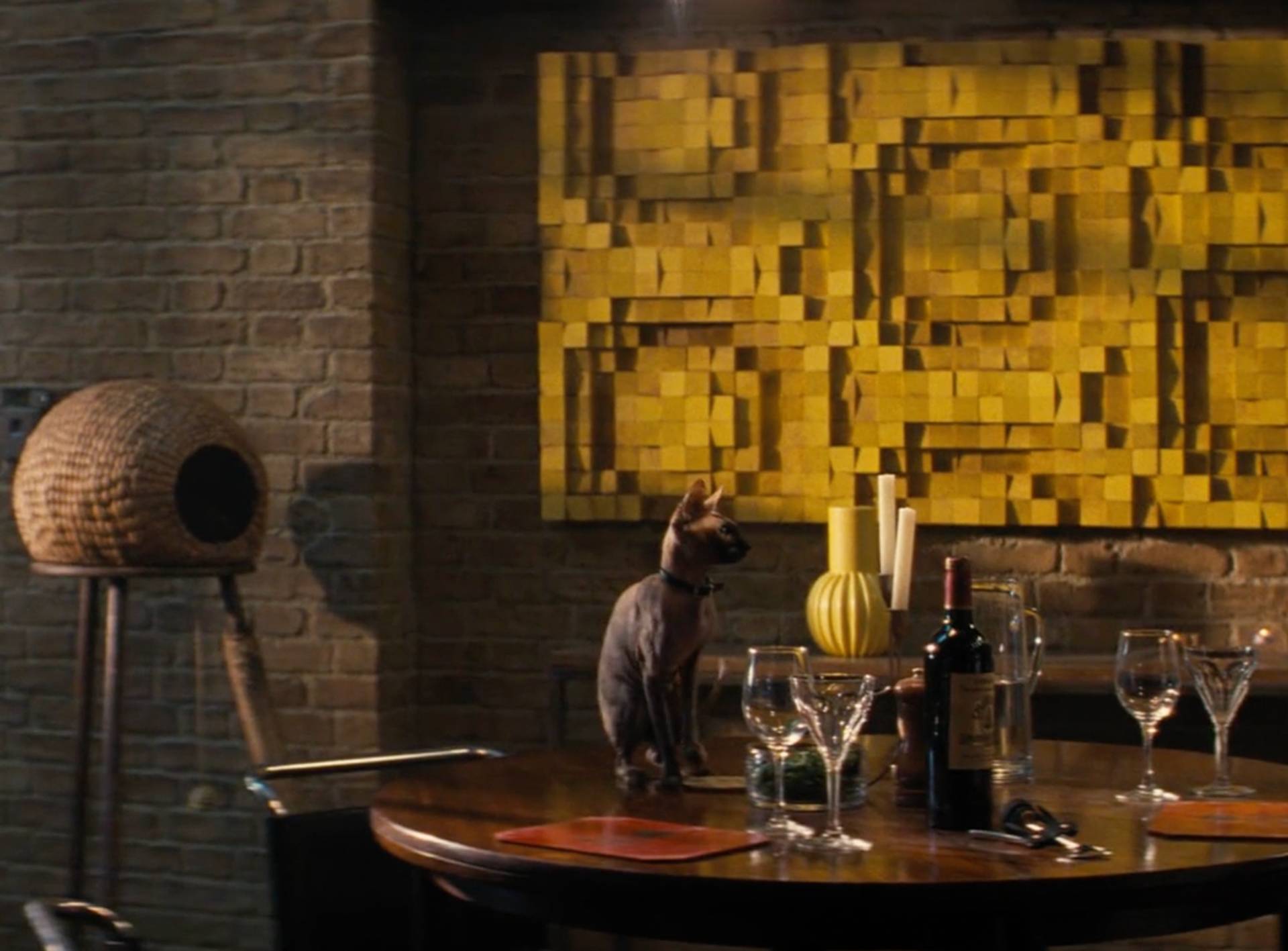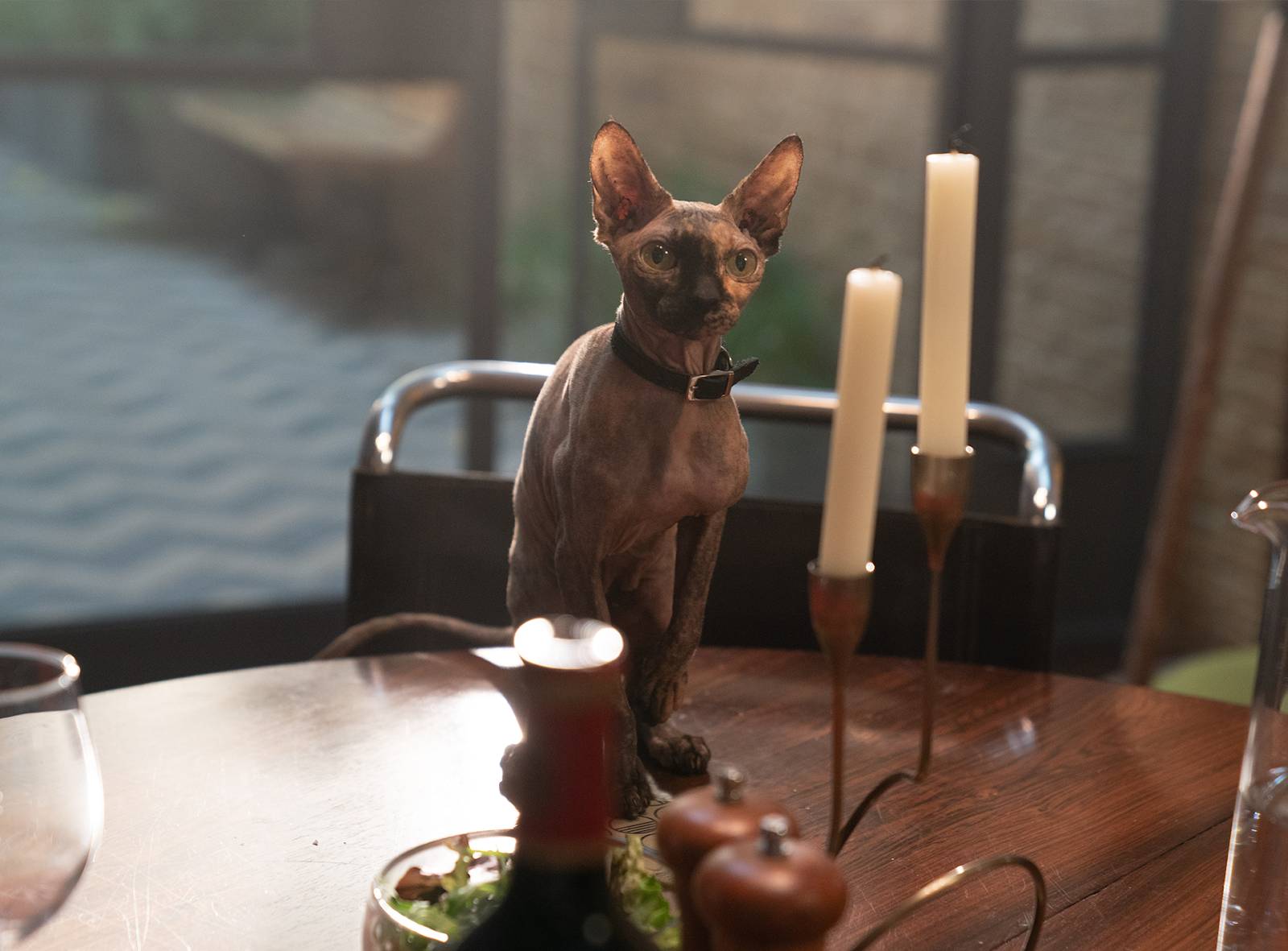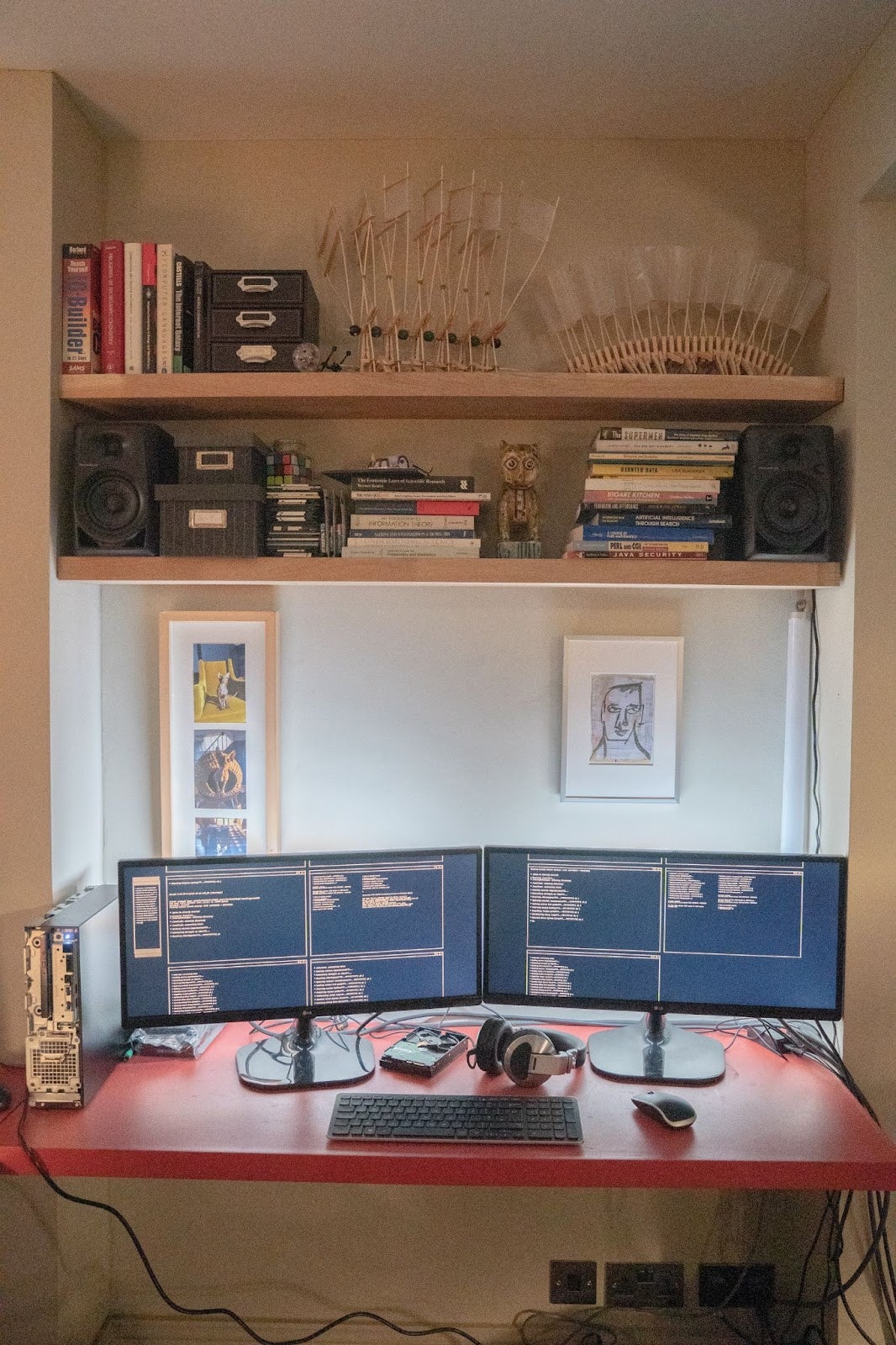BAFTA and Academy Award nominated make-up designer Naomi Donne, shares her memories of working on five of the Bond films: The Living Daylights, Licence To Kill, Quantum of Solace, Skyfall and Spectre.
You’ve had an incredible career so far, where did it all begin?
I was doing a foundation course at Art school wondering where it might take me and it suddenly hit me that I could be a make–up artist. My mother rang the BBC to see if it was even a job and after a 3 year course at the London College of Fashion I managed to beg my way into the BBC to get on their training course. I left after an incredible 7 years to go on tour with Tracey Ullman as her make up artist. A year later I was working on a Bond film!
How was the move from TV and touring to Bond?
Film was never on my horizon and I didn’t think there was any way I could ever get into it. Tracy [Ullman] was offered a film for Channel Four which I did with her and the producer asked me to do a feature film. It was called The Doctor and The Devils starring Timothy Dalton. It was my first film. Then I went off to work with The Comic Strip gang: Jennifer Saunders, Dawn French and Rik Mayall and Ade Edmonson. One day, I saw the headline ‘Timothy Dalton is the new James Bond’ and I said as a joke, “Wouldn’t it be fun if Tim asked me to be his personal make-up artist”. We all laughed. That night, the Bond producers rang and asked if I could come in for an interview. You have to understand it was so outside my realm of experience to even be working in film, let alone a Bond film.
Were there major differences between working in TV and Bond?
At that time, all the make-up artists who worked in television were women but in film it was all men. There were some female hairdressers, but they had never seen a woman make-up artist before. But I got the job. I joined the Bond family and it has defined my career.
What were your first impressions working on The Living Daylights?
First of all, the make-up tests were terrifying because you have the whole team inspecting the look of the new 007. All the producers were there and I had never been in that situation before with producers giving me notes and asking what we can do. I was terrified!
What went into creating a look for Timothy Dalton as Bond?
Tim was very keen that there was a huge reality to his character. That might sound obvious now but that was a big change, not just in Bond films but for films in general. Films were moving away from heavily made up people who looked perfect and into a portrayal of expressing what the characters were going through. Many people said that Tim was ahead of his time with Bond. He was incredibly handsome so it wasn’t really a push to make him look good. I helped create a Bond that was good looking with a reality to him. So you see him sweat, his wounds, dirt on him after fighting, his hair becoming a bit messy, and all of the things Tim really wanted his 007 to be. You’re telling a story and the make-up has to fit that story. In the old Bond films, you’d never see Sean Connery with two-day beard growth so he’d always be clean shaven. But with Tim, you would go, “Well, he’s been up all night, so maybe we won’t shave today”. It was a big deal in those days.
What surprised you working on Bond?
The press. Someone would always be watching so I didn’t want to do make-up checks on Tim and get Bond caught on camera having his make-up done. So we were on a tram in Vienna and to avoid the press getting a photo I said, “Get under their seats and I will fix your make-up”. We crawled under a seat and I adjusted Timothy’s make-up!
What are the demands of doing make-up on location?
When it’s your first Bond, like The Living Daylights, you’re battling the conditions but it was all fun. Bond films are always going to extreme locations which are exotic, remote, hot, tropical or freezing. Scenes in the desert with the heat, the sand, the dust is challenging. On Spectre, we were up in the mountains in freezing cold conditions and brilliant sunshine so the actors were cold but could burn in the sun.
Working in the desert must have been difficult?
I made Tim up, he looked a bit bronzed and gorgeous but the make-up was just dripping on his white shirt. It’s a battle all the time not to mess up costumes with make-up. There are lots of things I would do differently now. There are so many new products but none of them existed in the 1980s.
In Licence To Kill, there’s some big moments for make-up and hair. What do you remember?
With Carey Lowell, who played Pam Bouvier, she started out in disguise and we were trying to work out what hairstyle she should have. I had a wig made and I decided to cut it into a bob. I cut it, blow dried it and styled it on Carey’s head in front of Cubby and Dana Broccoli, who were watching the whole thing. It was so stressful! That was a huge pressure but it worked out. In many ways I felt very supported.
Why did you have such a big gap between the Bond films you worked on?
I did two Bond films and then I moved to the US to live. I didn’t do any more Bond films until Quantum of Solace when I was asked to do the hair and make up for all of the women on screen. I was very happy to come back.
What had changed in that time?
We had all changed. I was much more experienced but it felt like coming home. In 2008, people had embraced the reality of how people look in those gritty situations. We had Bond women like Olga Kurylenko as Camille Montes looking like she’d been through hell. Paul Engelen was doing Daniel Craig’s make-up on Quantum of Solace. Daniel had a huge reality to his portrayal as Bond, he was sweating and bloody. It was great.
Strawberry Fields dies in a visually dramatic way when Gemma is covered in oil. How did you put that look together?
Gemma is brilliant. I had black oil made by special effects, obviously non toxic and tested, and she just laid there while I poured it on her. There’s an amazing photo of me pouring it all over her body in one of Greg Williams’ books showing Bond behind the scenes.
Did Gemma have to stay still in between shots?
Gemma is just incredible, such a pro and very highly trained. She was a dancer and so disciplined. She just didn’t say a word. The oil went everywhere – up her nose, in her hair and her eyes – and she just didn’t move.
You went on to be responsible for the overall make-up design for Skyfall…
I had met Sam Mendes socially but we’ve never worked together before. On Skyfall, we developed a professional relationship and it’s grown over the years. He gives you a lot of freedom to try out ideas. Skyfall was the beginning of a great collaboration with Sam.
Donald Mowat was Daniel Craig’s personal make-up artist on Skyfall. How did you work together?
I’m very aware of that dynamic between someone who’s designing a film and someone who is fitting into that vision because I’ve also been a personal make-up artist. I always ask the designer , “What world are you creating? How do you want the character to look?” You have to be in the same world. Donald is so experienced and is very aware of that.
You worked with a team to create prosthetics for Skyfall for Javier Bardem as well?
Chris Lyons designed the teeth to look perfect on Javier and then created the special effects steel jaw. He also had contact lenses and a wig designed by Zoe Tahir. It was quite an achievement. I was involved because Javier’s personal make-up artist Alessandro Bertolazzi wasn’t around at the beginning of filming so we collaborated to make it work. We’re friends so I was very happy to do that.
Where did the idea for Javier’s blonde hair come from?
Javier came in with a picture of a criminal who had white hair and he loved the idea. His hair is heavy and very dark so it’s quite a thing to turn him into a blond. He played it brilliantly and is so creepy. Javier’s got a great sense of humour and is really good fun.
In Spectre you returned to Mexico for the iconic Day of the Dead sequence…
It was an incredible achievement to make-up all of those people in Mexico City. We prepped for weeks. I was shooting at Pinewood so I sent a team of people out led by Nikita Rae who knew how I worked and was able to fulfil my ideas. They would fit 25 people a day and paint their faces. At the end of my day, all these images would start coming through to me while I was filming at Pinewood. I would give notes on every single person.
It must have taken some organising!
It was run like an army! When I got to Mexico, we had 150 make-up artists and 150 hairdressers all working together in this massive stadium conference centre. They’d been doing those looks for six weeks so they were very prepared. We did 1,500 extras in two hours which is mind-blowingly fast. When we got to the set everyone looked so amazing and I just burst into tears!
It’s an incredible opening few minutes…
Sam had very strong ideas about what he wanted these moments to look like. The opening of Spectre influenced Sam’s work going forwards.
How did you ensure the authenticity of Mexico shone through?
By employing local artists and giving people freedom to be creative. You give references for all the looks and freedom to interpret. That’s how the local flavour comes by giving people a safe place to create. They’d never had a Day of the Dead parade on the scale we had in the film there in Mexico City and since then it’s become a big event.
Where’s your starting point then for creating the look of a lead actress in a Bond film?
It’s a collaboration. You sit with the director, the actor and the costume designer, and come up with ideas. I do a series of make-up tests. You have that luxury on Bond films as you have the actors for quite a while before shooting, so you can try different things. Bérénice playing Lim Marlohe in Skyfall wanted a smokey eye look. When Javier’s character Silva shoots Severine, she’s lying there with make-up dripping down her face and it adds emotion to the scene. It’s all smudged and that’s a moment where you can see the reality.
Do you have a favourite make-up look?
It was great creating the Bond actresses because they go through so many changes – natural, in a shower, dressed up to go to the casino and in action. There’s lots of hidden details for Severine in Skyfall. We had a link up with OPI nails and they allowed me to design a nail colour called Skyfall. I took the colour straight from very warm burgundy-type reds on set. So we designed a nail varnish and I put gold leaf on the very long nails for Severine. Things like that are very exciting to me.
Were there other hidden details?
We designed this little tattoo on Severine. She had been held captive and been tattooed in the same way that you brand cattle. I spent days looking at types of branding and in the end we went with a number-like symbol on her wrist. When Bond sees the number tattoo on her wrist he realises her past. It was a very pivotal moment in telling that story. I think the detail was probably missed, because it was a very quick moment but I spent weeks looking for reference, because you want to be accurate.
What advice do you have for the actors to look good on screen?
I like them doing a lot of prep work with their skin. I send them to have facials to get their skin in really good condition which means less make up is needed and their skin has a natural glow.
What is your favourite memory from your work with 007 so far?
I’ve done over 100 films and nothing compares to working on a Bond. When I think of my time on these films, it’s the fun we had mixed with all the hard work. People always say that you are never cared for as much as when you work on a Bond. It’s truly a feeling of being part of a family and it’s that caring that pushes you to do your best work.
